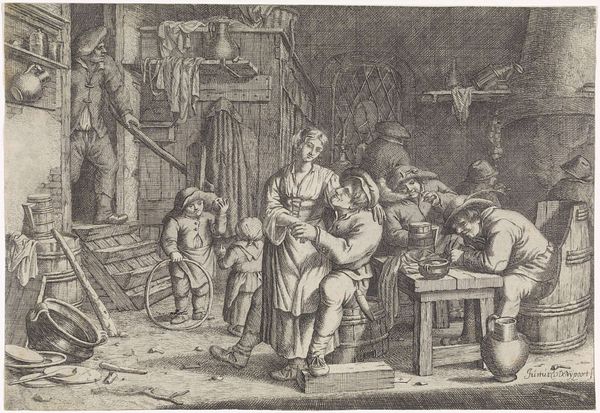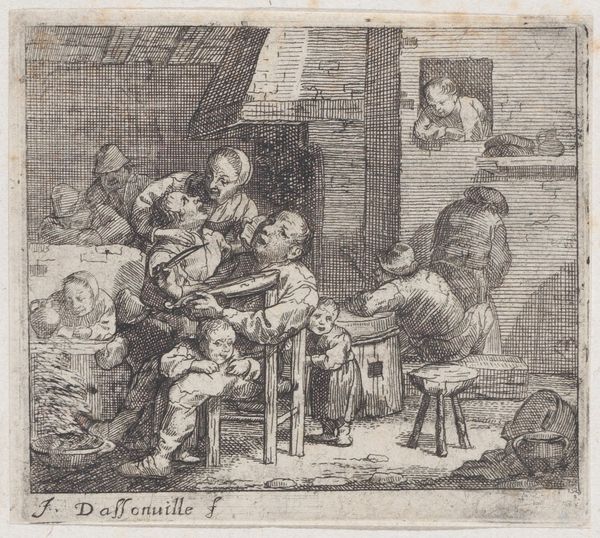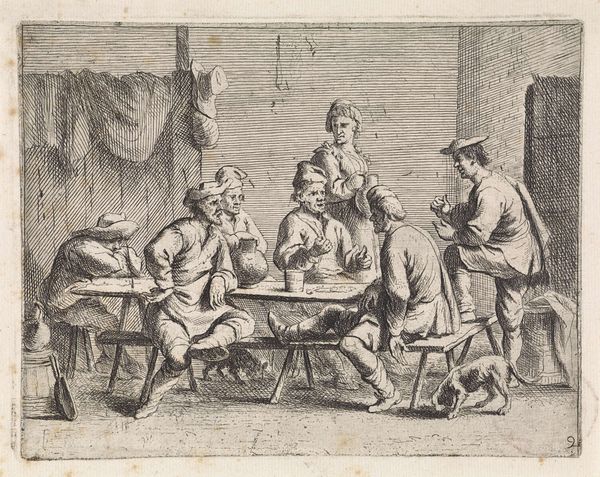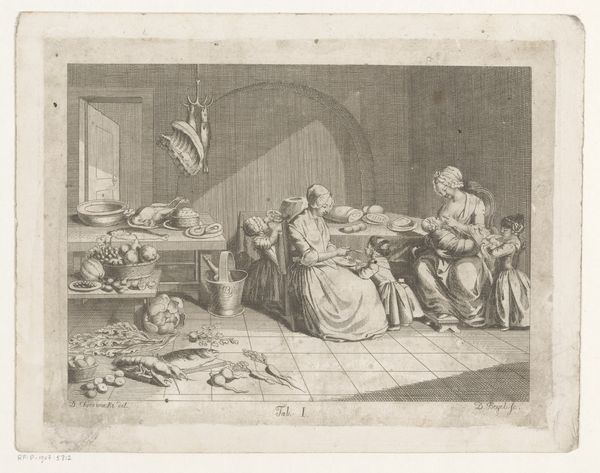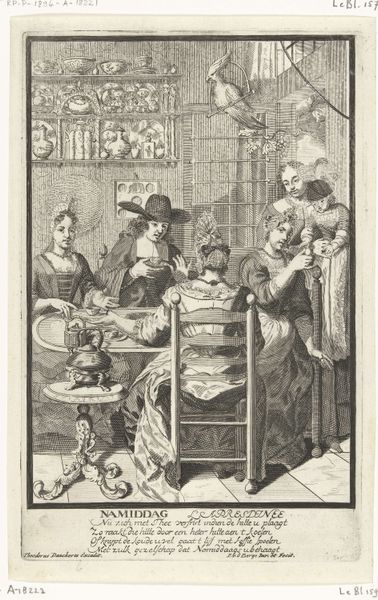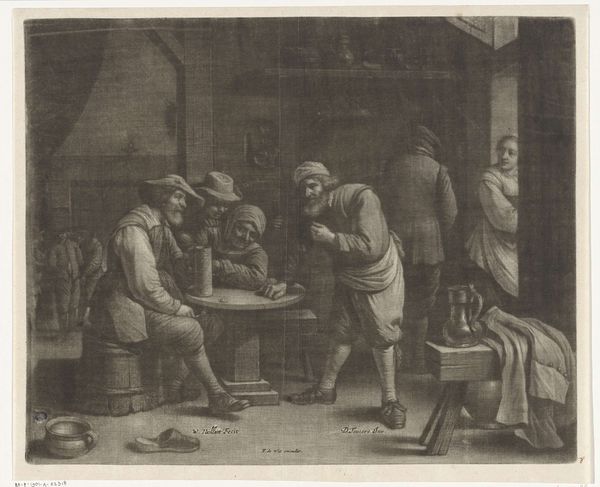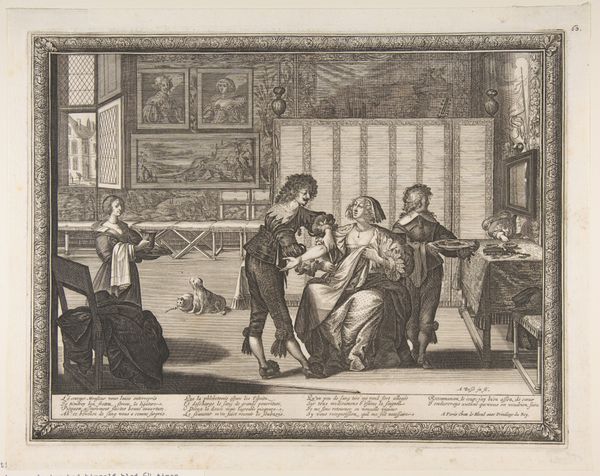
drawing, print, ink, engraving
#
drawing
#
narrative-art
#
pen drawing
#
dutch-golden-age
# print
#
figuration
#
ink
#
genre-painting
#
engraving
Dimensions: height 64 mm, width 112 mm
Copyright: Rijks Museum: Open Domain
Curator: We are looking at an engraving titled “April” attributed to Christoffel van Sichem IV, created sometime between 1652 and 1718. It's a rather small piece executed in ink. Editor: My initial impression is of a somewhat tense domestic scene, despite its delicate rendering. There’s a confined feeling, a sense of enclosure. Curator: Indeed, observe how the artist employs dense hatching to define the interior space, contrasting sharply with the open landscape glimpsed through the arched doorway. Notice, too, the distinct zones created within the composition, demarcated by these variations in textural density. Editor: That doorway is key, I think. It offers an escape, a visual release from the very structured interior. A lamb stands passively in the opening as a possible symbol of purity or even sacrifice appropriate for a religious calendar; consider its relation to the serving maiden. Curator: A provocative association! One could certainly interpret the lamb's symbolic weight. However, from a purely formal standpoint, the doorway provides necessary depth and contrast. The strong verticals and horizontals established by the architecture and furniture find relief in its curved form. Editor: But wouldn't that emphasis on the rigid architecture and severe table further suggest to viewers a particular religious ideology or strict moral structure inherent to 17th century Dutch culture? We know the era imposed rather rigid religious and class constraints. The serving figures seem subordinate to the seated diners, set in sharp relief. Curator: I agree it lends weight to the scene’s gravity; note the repetition of forms—the circular heads echoing the archway, subtly connecting inside and out. It produces, to my mind, a pleasing visual harmony throughout the image. Editor: The iconography is a source of ongoing inquiry that reveals shifting ideas over centuries, not all harmonious or purely visual, of course. Food service, for instance, becomes imbued with social power and morality. We often think of seasonal rounds represented as light allegories or pastoral scenes, yet here a humble indoor reality emerges, more direct, less courtly than previous centuries’ art. Curator: I concede that historical context adds dimension. For me, the masterful linework remains its most compelling quality. Editor: Indeed, whether tracing social customs or studying the composition, "April" gives us many compelling insights.
Comments
No comments
Be the first to comment and join the conversation on the ultimate creative platform.
